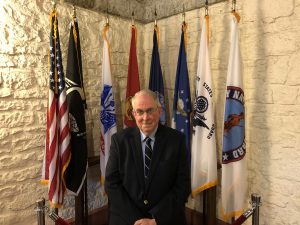My name is Kolton Chapman and I live in Pickerington, Ohio. I am a transgender man living with a chronic illness. My life hasn’t always revolved around my illness –– I am an artist who enjoys coloring books and helping people design logos and other items to help with their businesses. I am a son who loves to spend time with his family, and I am an insurance agent. That last one is what I am most proud of. I have worked very hard to get to where I am today, and even with everything working against me, I was able to achieve my goals. I view every scar that I carry as proof that I have survived this long, and that it is going to take a lot more than that to break me.
In 2014, I was diagnosed with ulcerative colitis. After my diagnosis, I began taking Lialda to try and put my disease into remission. Just one month’s supply of that cost me $250, because there was no alternative drug available. That $250 was my cost even after what my insurance company covered. Two years in, I began receiving Entyvio infusions for my ulcerative colitis every four weeks. When I first began infusions, Entyvio was totally covered by my insurance. But I later had to change insurance coverage due to circumstances out of my control, and the price became astronomical. Every four weeks, I had to pay $1,200 per infusion under my new insurance.

At the time of this cost increase, I was in college and was already feeling the financial burden of student debt. Budgets for students are already tight enough, but the immense increase in cost for my infusions left me in an incredibly difficult position. Unfortunately with the added financial burden from my infusions, I had to choose between affording the cost of my infusions or school. This decision really wasn’t a decision at all since I needed the infusions to stay alive. The unreasonable price of my prescriptions forced me to leave college.
Because of the astronomical cost of my Entyvio infusions, I now owe more in medical debt than I do in student loans. The massive financial burden from medical and student debt factors heavily into my decisions. I had to remove my colon, knowing that it was the only thing I could do to avoid more debt. Our medical decisions shouldn’t be driven by what will protect us from the most debt, but what will bring about the best health outcomes.
In 2019, I was diagnosed with moyamoya disease, a rare blood vessel disorder, and have already suffered a stroke. My main priority through my health challenges should be focusing on my health –– not on bills and making ends meet. But unfortunately, with high prescription costs, their prices and my medical debt always factor into my decisions. Although I now have different coverage and am taking different prescriptions, I still spend over $150 per month on my four medications. This cost may seem more manageable compared to the $1,200 I was spending monthly on infusions before, but it’s still an incredible financial burden that is only being added on top of the remaining medical debt hanging over my head from earlier infusions.
My life path has been completely altered by expensive prescription drugs and drug company greed. I often feel like I’m behind all of the people my age — even people younger than me — because I’ve had to focus my time and money on staying alive. We shouldn’t have to give up on pursuing a college education because of crippling medical debt. We shouldn’t have to make every financial decision with the cost of prescriptions and medical debt in the back of our minds. Things can be better if our leaders rein in drug companies’ greed and make the needs of patients like me the priority.

